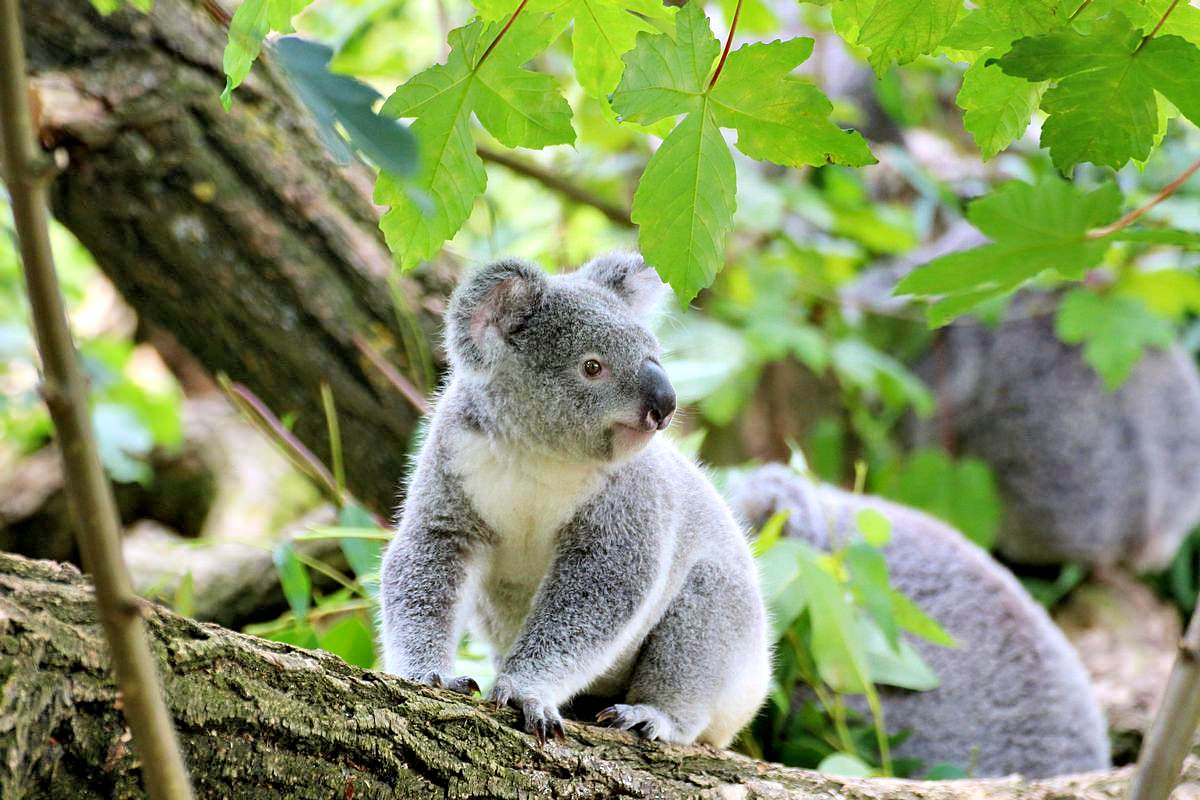Koalas, the iconic fluffy residents of Australia, are undoubtedly one of the cutest and most beloved creatures on the planet. 💕 With their big fuzzy ears, button noses, and endearing teddy bear-like appearance, it’s no wonder they’ve captured the hearts of millions worldwide. 😍 However, beneath their adorable exterior lies a fascinating world of surprising secrets and remarkable adaptations that make these marsupials truly unique.
👣 The Fingerprint Detectives 🔍
Did you know that koalas are one of the few non-primate mammals to have fingerprints? 🤯 Yes, you read that right! Under a microscope, their fingerprints are strikingly similar to those of humans, with intricate whorls and ridges. This remarkable trait aids in their exceptional climbing and grasping abilities, allowing them to navigate through the treetops with ease and grip branches securely. 🌳
Their sharp, curved claws and opposable thumbs are perfectly adapted for clinging onto branches of various sizes, from delicate twigs to thick limbs. Koalas can effortlessly scale towering eucalyptus trees, their preferred habitat, and pluck the fresh, tender leaves from the highest branches with remarkable dexterity. 🍃 These fingerprints also provide enhanced tactile sensitivity, enabling koalas to discern subtle differences in texture and identify the most nutritious eucalyptus leaves to consume.
🦁 The Mighty Roar of the Koala 🔊
Don’t be fooled by their cuddly looks – male koalas have a surprising trick up their sleeves (or should we say, throats?). 😉 During mating season, they emit a deep, guttural bellow that sounds more like a lion’s roar than a tiny marsupial’s call. 🐻 This impressive vocalization, which can be heard from over a mile away, serves as a territorial display and a way to attract potential mates.
This mighty roar is achieved through a unique adaptation – a second set of vocal cords located in their nasal and oral cavities, separate from their regular laryngeal vocal cords. 🗣️ By controlling their breathing patterns, koalas can produce these low, rumbling sounds that reverberate powerfully through the air. It’s a remarkable feat for such a small creature, defying expectations based on their size and physical appearance.
🧠 The Minimalist Masterminds 🤓
Koalas are often labeled as “slow and stupid” due to their sedentary lifestyles and small brain sizes. 🤷♀️ However, recent studies have challenged this notion, revealing that their brains are actually larger than previously thought and on par with the average mammalian brain-to-body ratio. 🧠 Far from being unintelligent, koalas have adapted their cognitive abilities to thrive in their specific ecological niche.
Their seemingly lazy behavior is not a sign of stupidity but rather a clever energy conservation strategy. With their low-nutrient diet of eucalyptus leaves, which contain toxic compounds, koalas have evolved to maximize their energy efficiency by sleeping up to 20 hours a day. 😴 This allows them to conserve precious calories and minimize their energy expenditure, a crucial adaptation for survival in their harsh, nutrient-poor environment.
Moreover, koalas possess remarkable spatial memory and navigational skills, enabling them to remember the locations of their favorite eucalyptus trees and travel efficiently between food sources. They also demonstrate complex social behaviors, communicating through a variety of vocalizations and engaging in intricate courtship rituals during mating season. 💕
🔥 Fire-Resistant Survivors 🌳
For thousands of years, koalas have faced a recurring nightmare – devastating bushfires that ravage their eucalyptus forest habitats. 🔥 Their primary food source, eucalyptus trees, are highly flammable due to their oil-rich leaves, earning them the nickname “gasoline trees.” Despite their slow movements and seemingly vulnerable nature, koalas have managed to survive these catastrophic events through a combination of adaptation and sheer luck. 🍀
During a bushfire, many koalas instinctively seek refuge in the highest branches of tall eucalyptus trees, where the flames are less intense. Their thick, woolly fur provides insulation against radiant heat, and their ability to conserve water helps them endure periods of dehydration. 💦 Additionally, their strong claws and grasping abilities allow them to cling tightly to branches, reducing the risk of falling during the chaos of a fire.
While many koalas perish in the flames, those that escape often find refuge in unburned pockets of forest, where they can repopulate and recover their numbers over time. Their remarkable resilience and adaptability have enabled them to persist in the face of these recurring natural disasters, a testament to their evolutionary prowess. 🌳
🌏 Conservation Challenges and Hopes 🌱
Unfortunately, koalas have faced numerous threats throughout history, including habitat loss, hunting, disease, and the introduction of non-native predators. 😢 Their populations have declined drastically, with some regions seeing declines of up to 90% in recent decades. The loss of eucalyptus forests due to urbanization, agriculture, and logging has been a major contributing factor, leaving these iconic marsupials with dwindling habitats.
However, there is hope on the horizon for the conservation of koalas. 🌈 Innovative approaches, such as fecal transplants, are being explored to help koalas adapt to new eucalyptus species and expand their range. By introducing beneficial gut microbes from koalas that can digest different types of eucalyptus leaves, researchers aim to increase the available food sources for struggling populations. 🔬
Additionally, captive breeding programs, habitat restoration efforts, and public awareness campaigns are underway to protect and revive koala populations. With continued conservation efforts, stricter habitat protection laws, and a growing appreciation for these unique creatures, there is a chance that koalas may once again thrive in their native Australian habitats. 🇦🇺
Copyright © 2024 Hea1th.net

